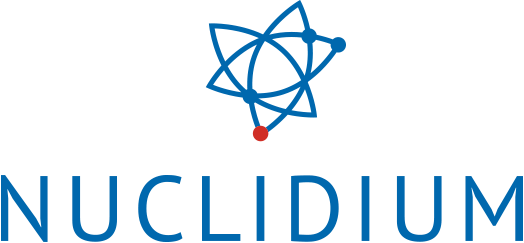Our Technology
Leveraging the unique properties of copper radionuclides in combination with tumour-specific molecules to maximise precision, performance and accessibility of targeted radiotherapy and diagnostics
Optimizing Radiopharmaceuticals to Fight Cancer
Our proprietary CuTrace™ platform utilises the unique properties of copper radionuclides in combination with tumour-specific molecules to create therapeutic and diagnostic pairs with an improved safety and efficacy profile, favourable economics and a wide distribution radius.
Precision
The combination of indication-specific targeting molecules and advantageous radiation properties of copper nuclides enable highly precise tumour targeting
copper nuclide half-life sufficient to allow delayed imaging, a critical technique for the detection of small, distant metastases

Performance
Unique radiochemical properties of our copper radionuclides enable excellent imaging quality and anti-tumour-efficacy as well as low radiation burden for the patient
![]()
Accessibility
Improved, proprietary manufacturing and broad supply network overcome current limitations at highly advantageous economics:- Reliable supply & easily available raw materials
- low-cost and scalable production
- Increased distribution radius,
- Flexible and easy-to-use
- Reduced radioactive waste

How Do Our Radiopharmaceuticals Work?
We combine precise cancer-targeting molecules with either a diagnostic radionuclide (61Cu) or a therapeutic radionuclide (67Cu) to create highly safe and effective diagnostic and therapeutic pairs (theranostics) for a range of cancer indications with high medical need.








- Targeted Radiotheranostics: Radionuclide, linker and ligand
- Radionuclide – a copper radiometal positron emitter with the radiation either responsible for the image in a PET scan (diagnostic, 61Cu) or the destruction of tumour cells (therapeutic, 67Cu)
- Linker – binds the radionuclide to the ligand
- Ligand – binds selectively to tumour-specific surface proteins
Our Copper Radionuclides
In a Therapeutic
- Higher dose can be absorbed per tumor volume
- Production without long-lived impurities
- Improved safety profile due to lower radiation burden
In a Diagnostic
- Ideal for PET scanning at delayed time points,
increasing the detection rate
- Patients risk is reduced due to the low radiation burden
and high imaging quality
What is the difference between a diagnostic and a therapeutic radionuclide?
Diagnostic and therapeutic radionuclides each must possess certain radiochemical properties to perform their specific function, render a patient’s tumour visible (PET imaging), or destroy the tumour cells via their emitted radiation, respectively. Critical factors are their half-life (time until a radionuclide has lost half of its radioactivity via radioactive decay) and the type, energy and radius of their emitted radiation.
Radionuclides used for diagnosis must emit sufficient radiation energy to escape from the body to enable a reliable and precise localisation of the tumour via specific imaging technologies like PET. At the same time, they must have a half-life short enough for them to decay soon after imaging is completed to keep the radiation burden for the patient as low as possible.
For therapeutic purposes, radionuclides need to emit enough radiation energy to induce destruction of the tumor cells. Their emission radius is usually smaller to ensure that mainly the tumor cells and not the surrounding healthy tissue is affected. Therefore, diagnostic radionuclides usually have a shorter half-life, lower radiation energy and larger emission radius compared to therapeutic radionuclides.
Manufacturing & Supply Chain
A reliable production and supply network is key to delivering transformational radiopharmaceutical products to patients globally. That is why we have focused from the beginning on securing these core pillars of our business to maximize the accessibility of our products.
With this approach we can address the main challenges in manufacturing and supply that are currently limiting the targeted radiotherapy and diagnosis to reach its full potential.
Key benefits include:

Low-cost and easily accessible raw materials

Reduced radioactive waste burden

No nuclear reactor needed

Short production time, lower equipment needs

Increased distribution radius
61Cu production & distribution process
67Cu production & distribution process
61Cu production & distribution process

67Cu production & distribution process

Our global supply network
We are establishing an extensive production and supply network in key locations in the EU and North America thereby bringing greater flexibility to medical facilities. We are continuously expanding this network to provide cancer patients worldwide with our unique copper-based radiopharmaceuticals.

